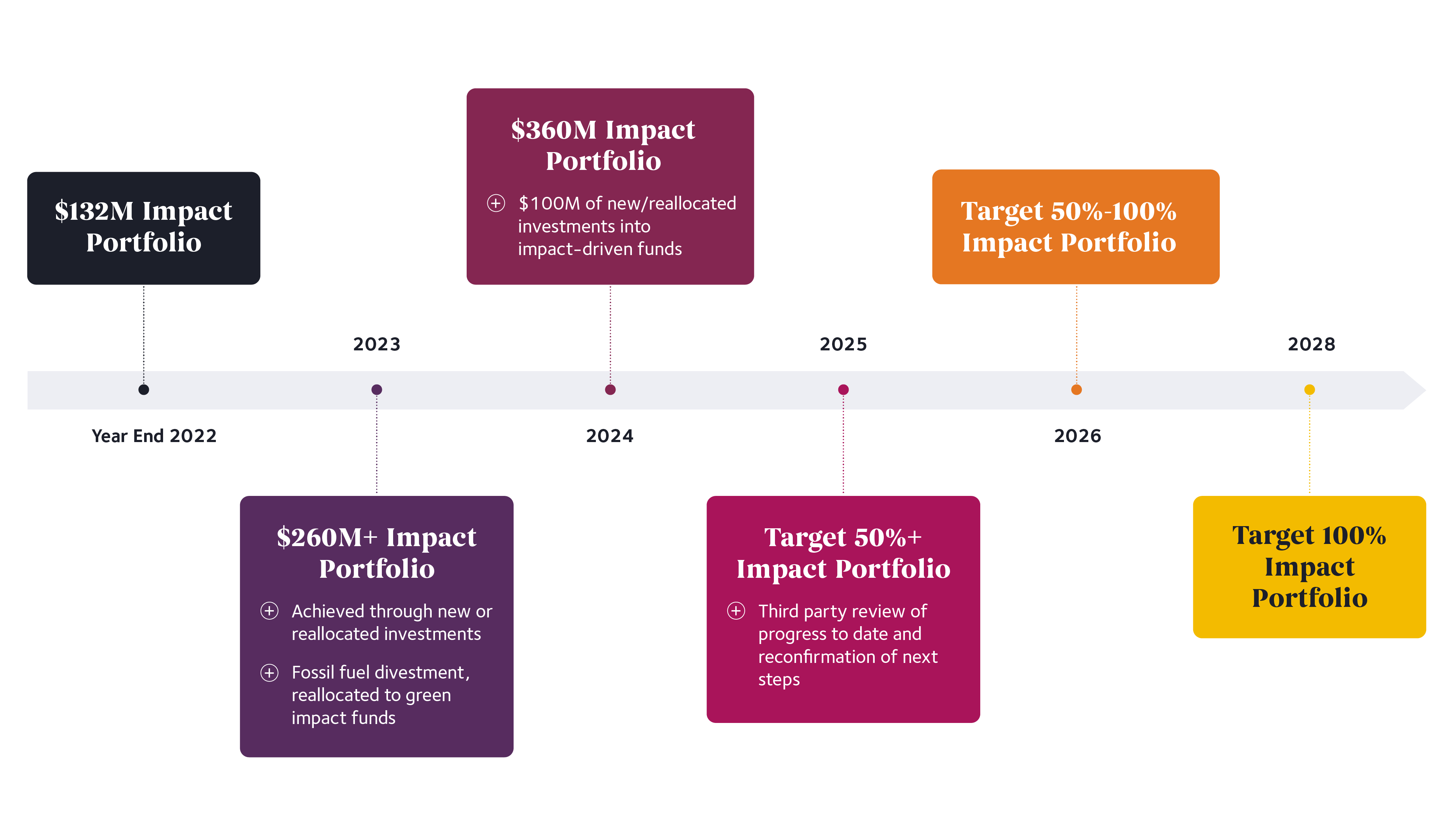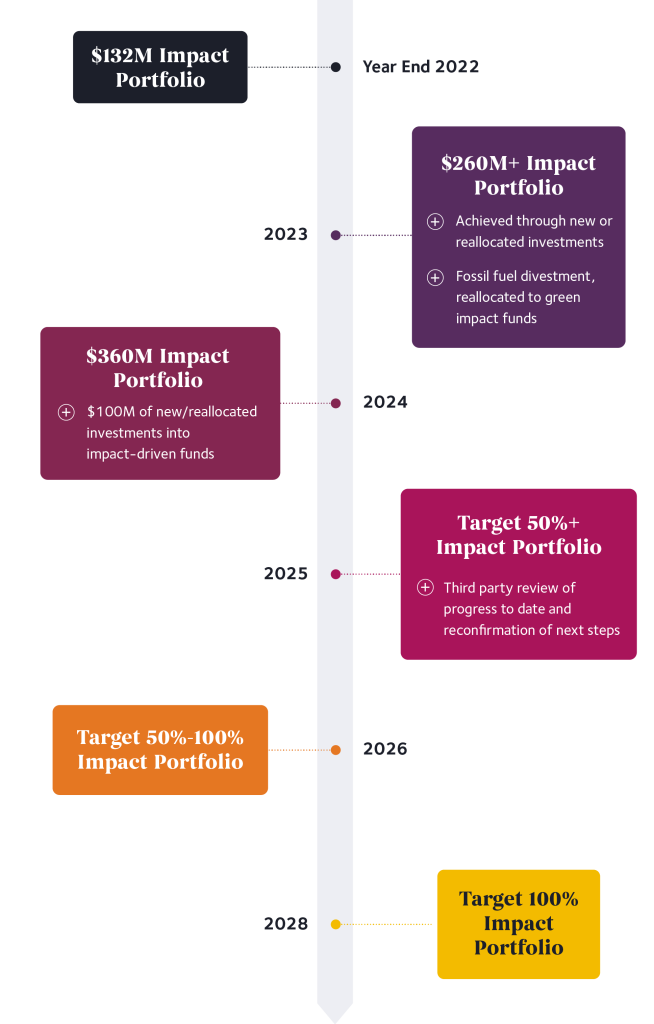We believe this is an important and necessary next step on our impact investing journey. Our impact investing thesis is that by aligning all of our capital with our mission, we can help build a thriving impact investing market in Canada, accelerating the shift to an impact-first economy where all investments contribute to meaningful positive impact for communities and the environment.
Working within our existing investment policy, we aim to build a balanced portfolio that achieves measurable, additional, solutions-oriented impact while generating sustainable returns to fund our charitable activities.
Our investment strategy aims to:
- scale impact
- build and influence the market through financial innovation and by shifting corporate and institutional behaviour,
- strengthen the capacity of the community sector by enabling new forms of finance for charities and non-profits, and
- align our investments, both new and existing, with international impact management best practices and integrate equity, diversity, inclusion, and accessibility (EDIA) considerations throughout our investment process.
Our commitment to a complete impact allocation of our portfolio comes with a greater need for consistency and transparency around impact performance so that we can be sure our investments are genuinely leading to better outcomes. We have refined our approach to measuring, monitoring, and reporting on the impacts – both positive and negative – that our investments generate. Our process draws on trusted international frameworks and principles and includes the complete integration of diversity and inclusion considerations in our investment process. We will continue to report on our progress annually through our published impact report.





